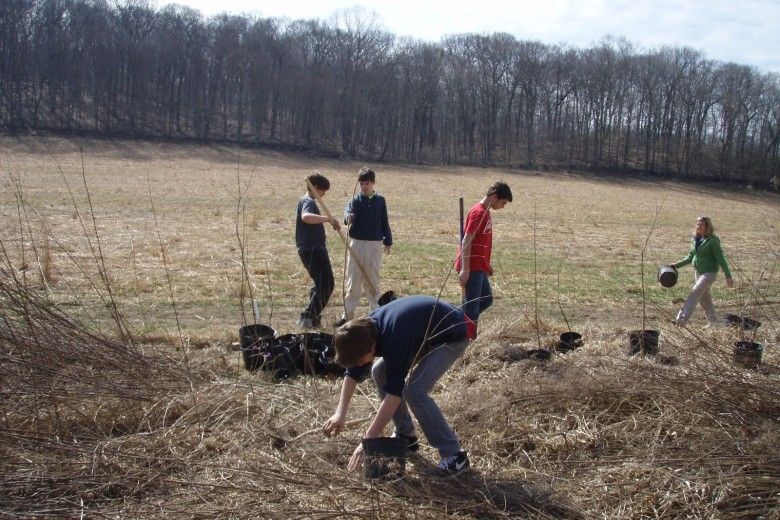Teaching the Importance of Water Quality

Last week, a group of students from Upland Country Day School were invited to spend the day at the Laurels Preserve.
Their morning started off with a stream study in each of the two streams that flow through the Laurels, Buck Run and Doe Run. The collection of macro-invertebrates (aquatic insects) is a quick and easy way to do a basic biological assessment of stream health. While the objective is to pull insects and larvae from the stream while remaining safe and dry on the streambanks, inevitably some of the students always manage to get wet. With some soggy feet and much enthusiasm, we found quite a few species of mayflies, caddisflies and stoneflies. All three of these species breathe with gills, making them sensitive to pollution in streams. Their presence in a body of water or wetland is in indicator of good water quality. Other species of insects found included water penny (an aquatic beetle), black flies and midges.
After the stream study, we had the opportunity to talk with the students about the benefits of monitoring stream health and the overall importance of water quality. We talked about the role of riparian buffers in protecting water quality, which was a nice transition into our afternoon project-- planting trees along the stream bank. The students planted over 100 trees and shrubs along the riparian corridor. We used all native species including mockernut and bitternut hickory, a blight-resistant variety of American elm, swamp white oak, staghorn sumac, pin oak, American linden, black chokeberry and black gum.
The students were a tremendous help, and thanks to the mild weather, everyone had a great time.